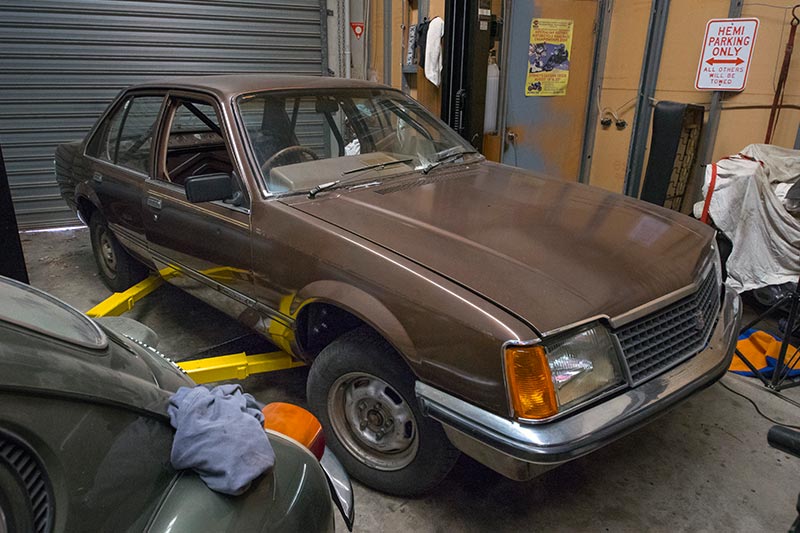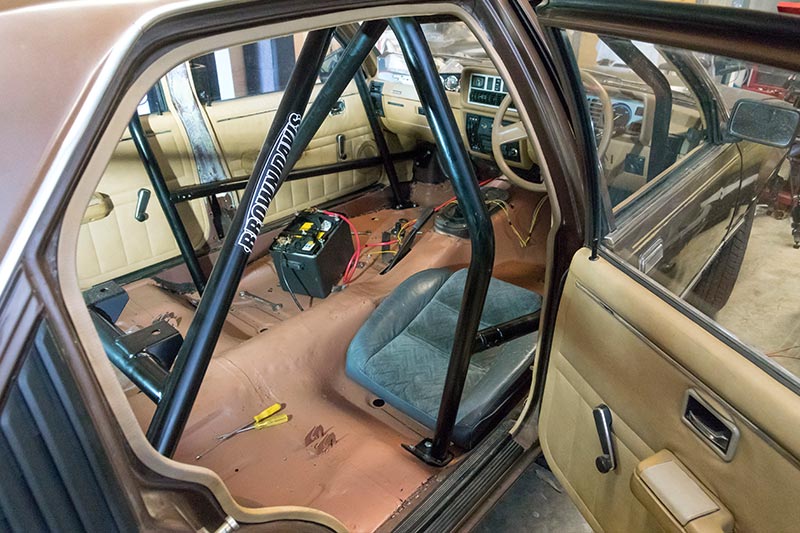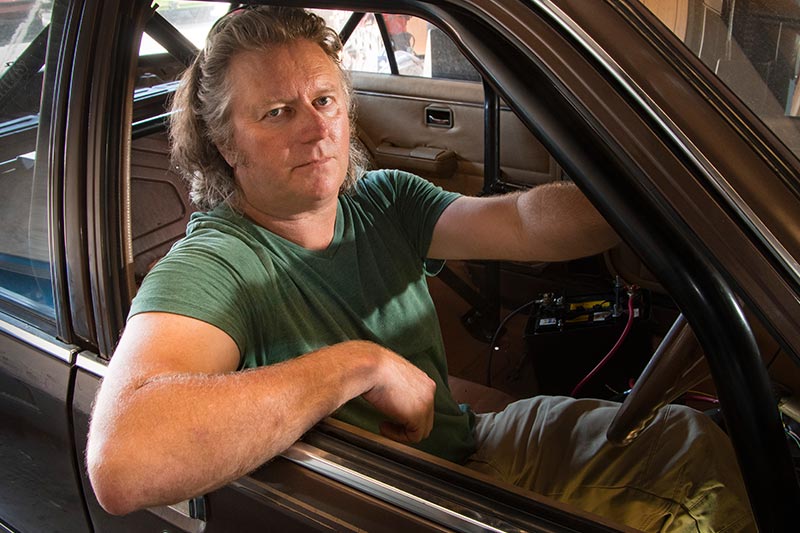Holden VC Commodore Roll Cage Preparation - Our Shed



|
Dave Morley finds himself behind bars
Despite having driven plenty of race cars over the years, having built my own many moons ago and helped spanner up countless others, when it came time to organise a roll-cage for my hillclimb project, I didn’t really know where to start. So I went to the go-to guys for stuff like this; Brown Davis in Melbourne. And I went straight to the top – to the bloke whose name is above the door – David Brown. Brown Davis, you will recall, was responsible for the fuel tank in our giveaway Torana – amazingly, they still sell about two of these tanks a week. So when it comes to metal fabrication that absolutely can’t afford to fail (and I’ll put my roll-cage into that category) it’s a brand we trust here at UC. None of which altered the fact that I had no idea what I needed.
David’s first question was a simple one: What specification was I building the car to and at what level (CAMS uses club, state or national levels while ANDRA uses elapsed times) did I plan to run it? The regulations have a minimum standard for each category of car (I’m building mine to Improved Production specs) which is overlaid by a further minimum depending on the level of the event (the club, state, national thing again).

"The last thing you want to do is fit a roll-cage that you think is going to be enough, and then get knocked back at scrutineering because the cage doesn’t comply," David explained.
Turns out, for what I want, I could probably get away with a four-point cage, and while David admits a well-designed, well-built four-pointer can do the job, he reckons a six-point cage is a better bet for most people. That’d be me, then. Now, either is designed to keep the roof off your head in a roll-over, but the six-pointer should definitely keep the windscreen and the roof header rail out of your face as well. I like that idea.
"With a six-point cage, you’ve got multiples of extra strength," says David, "and done right, a six-point cage can add a lot of strength to the car’s existing structure. That’s what a lot of people don’t understand: You’re not just adding safety, you’re adding stiffness."

So, having made the decision to go with a six-point set-up, the next decision is easier. Says David: "For not a lot more money, you can make additions to the basic six-point layout that hugely improve the safety. You can add a footwell bar (to prevent intrusion into the pedal area in a shunt) a harness bar and a roof diagonal which drastically increases the cage’s ability to deal with loads at the front of the roof. Every time you make a new triangle, you’ve made the cage stronger. Think triangles.
"And once you have a six-point roll-cage, to not add a side intrusion bar is just silly. Like the other additional bars, it’s very easy and very cheap to do, yet it’ll make the car so much safer. But you’ve got to have a six-point cage to start with for all this to apply, so that’s why I recommend them."
Of course, even then, side intrusion bars aint side intrusion bars. "A ladder-style side intrusion bar is far superior. With the X-type bar, you end up with all the forces of a side impact going through a single point (the centre of the X). And that’s a point you’ll already have compromised by welding it. The ladder-style side intrusion bar actually gives 48 per cent more impact resistance than the X-type. And if you tie the intrusion bar into the car’s sill, it increases even further."

So what else do you need to think about? Well, David reckons cold-drawn seamless steel tube – not black pipe – is the right stuff for building cages because it’s consistent in metallurgy and wall thickness. No nasty surprises, in other words. But don’t forget that not all roll-cages are CAMS (or ANDRA) approved, and to be approved the cage really shouldn’t protrude past the limits of the front and rear axle line. "That’s so the cage doesn’t compromise the car’s existing, engineered crumple zones," David explains. Also, all joints need to be fully welded right around, not half-way or even three-quarters round.
Speaking of welding, that brings me to my final question: Weld-in or bolt-in? David reckons the weld-in cage offers the most additional stiffness, but a bolt-in cage also has advantages. It gives you the ability to swap the cage to a new shell (should that be necessary) and provided it’s still in good nick, a bolt-in cage can be removed and sold on to finance the next project.

Every roll-cage is a bit of a compromise, to be honest. I mean, you’ve got to leave space for a big lump of a driver (Mother says I have big bones) and that same driver has to be able to get in and out and see out of the car when he or she is inside. But I reckon climbing over a side-intrusion bar is a small price to pay for knowing that should it all go pear-shaped, I’ve a much better chance to crawl back out over that same intrusion bar in one piece.
So now that lot’s decided, it’s time to bolt her in.
Unique Cars magazine Value Guides
Sell your car for free right here
Get your monthly fix of news, reviews and stories on the greatest cars and minds in the automotive world.
Subscribe

.jpg)






.jpg)







